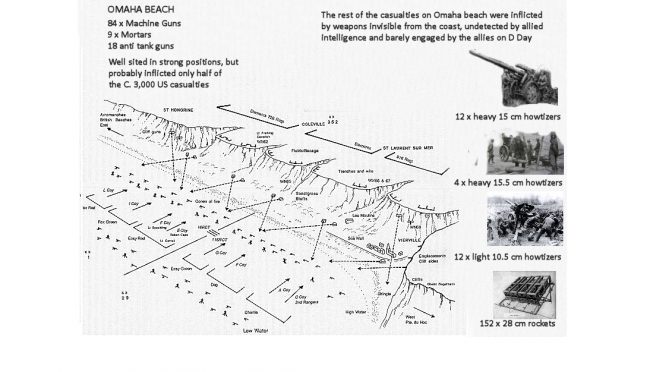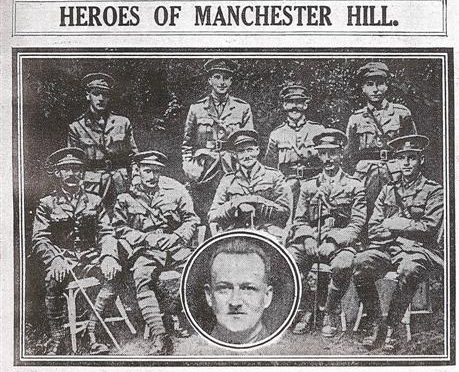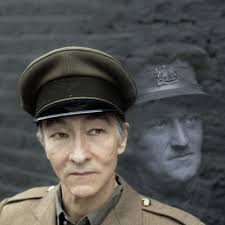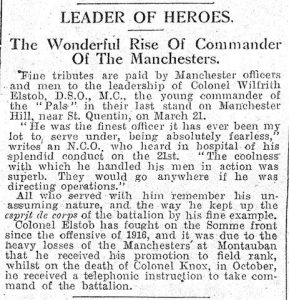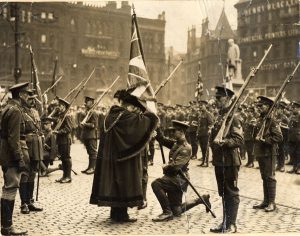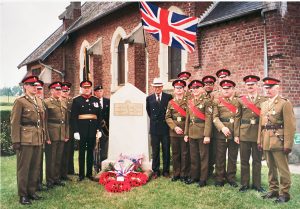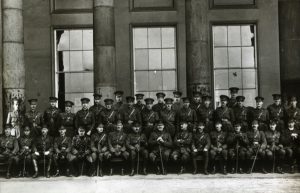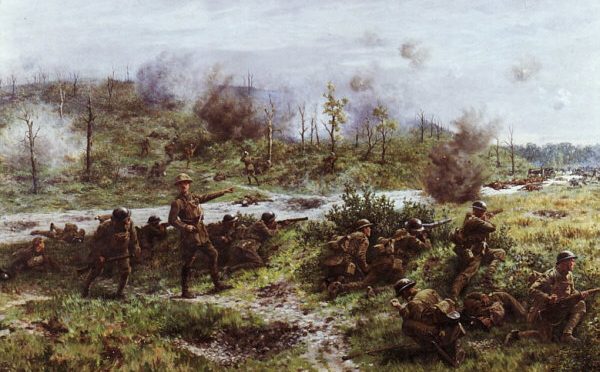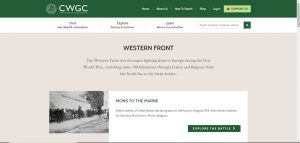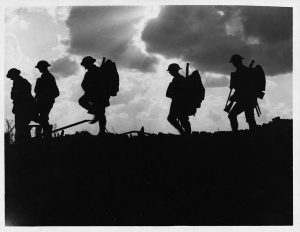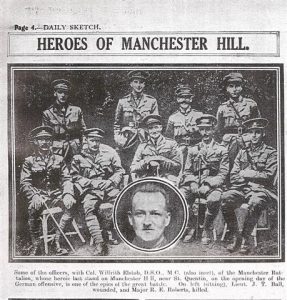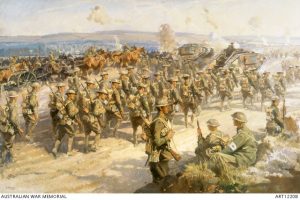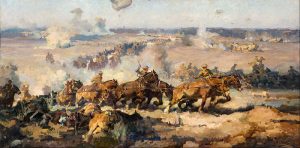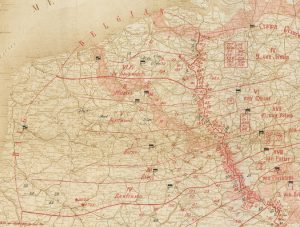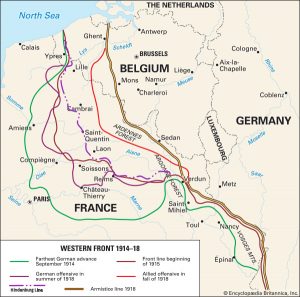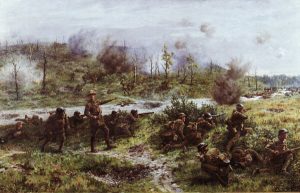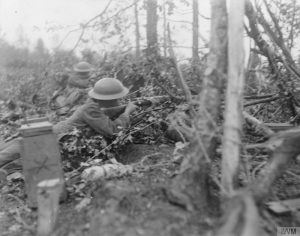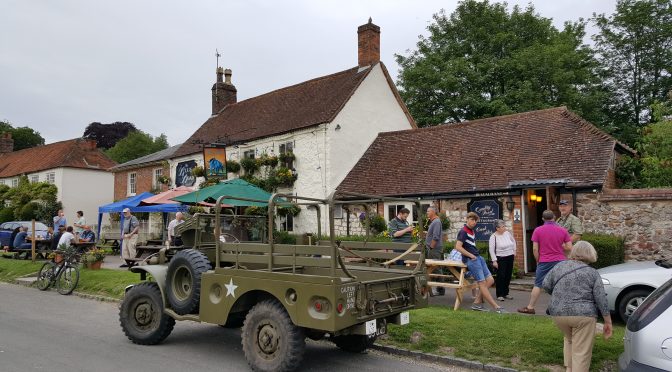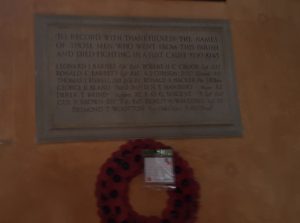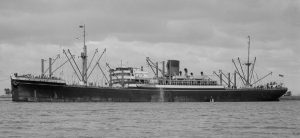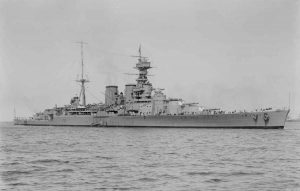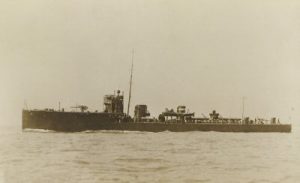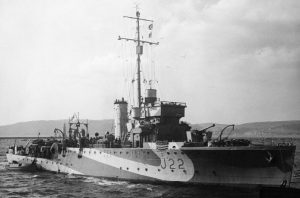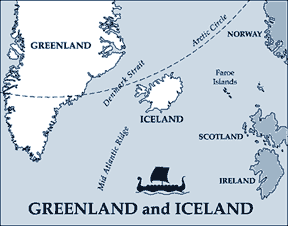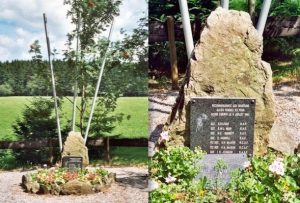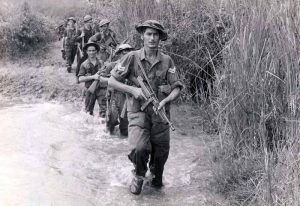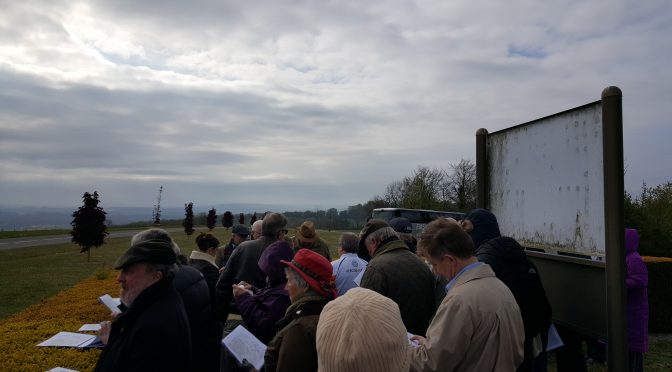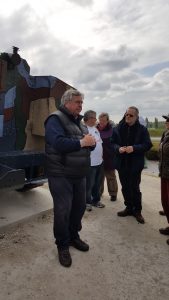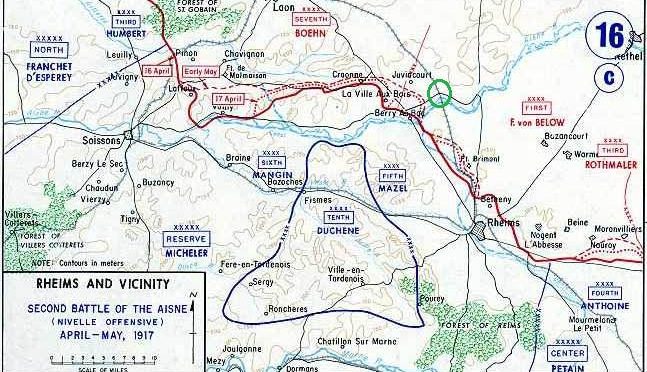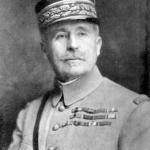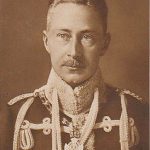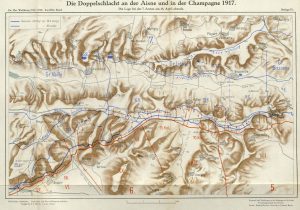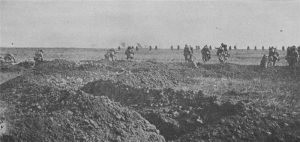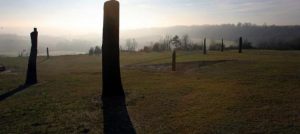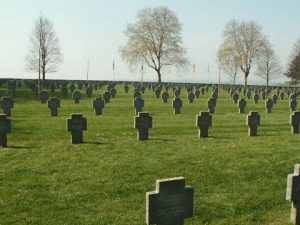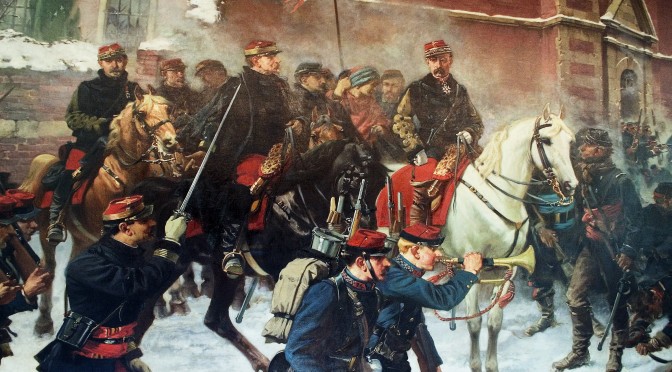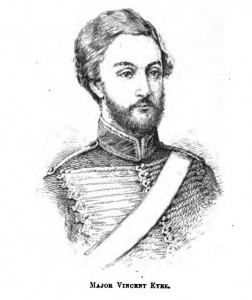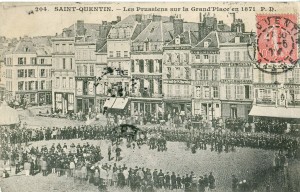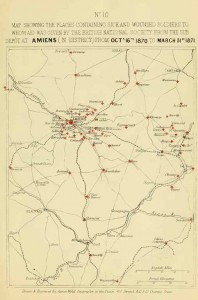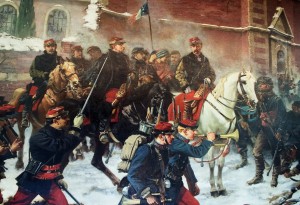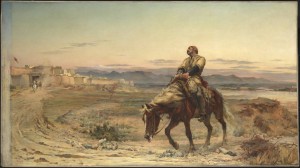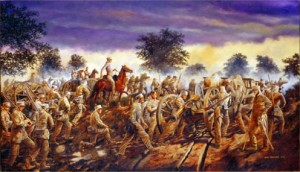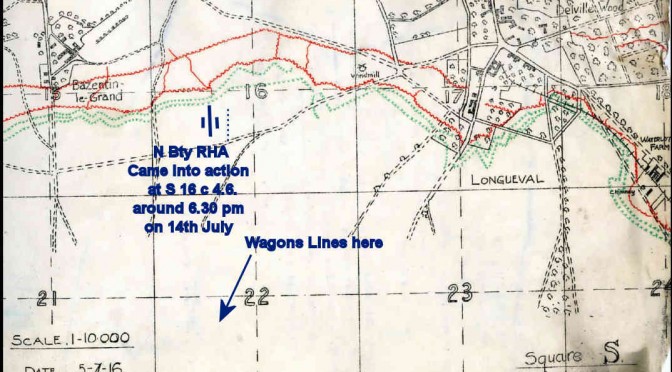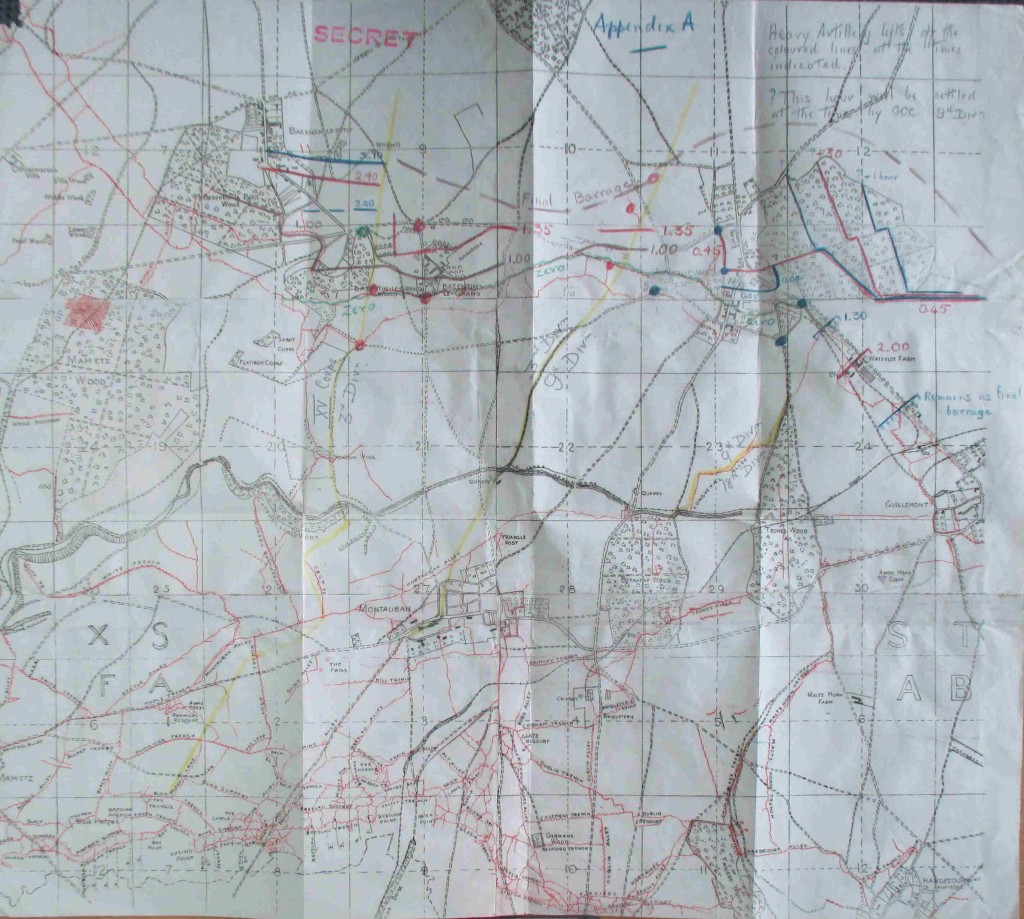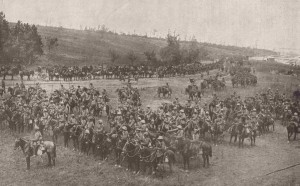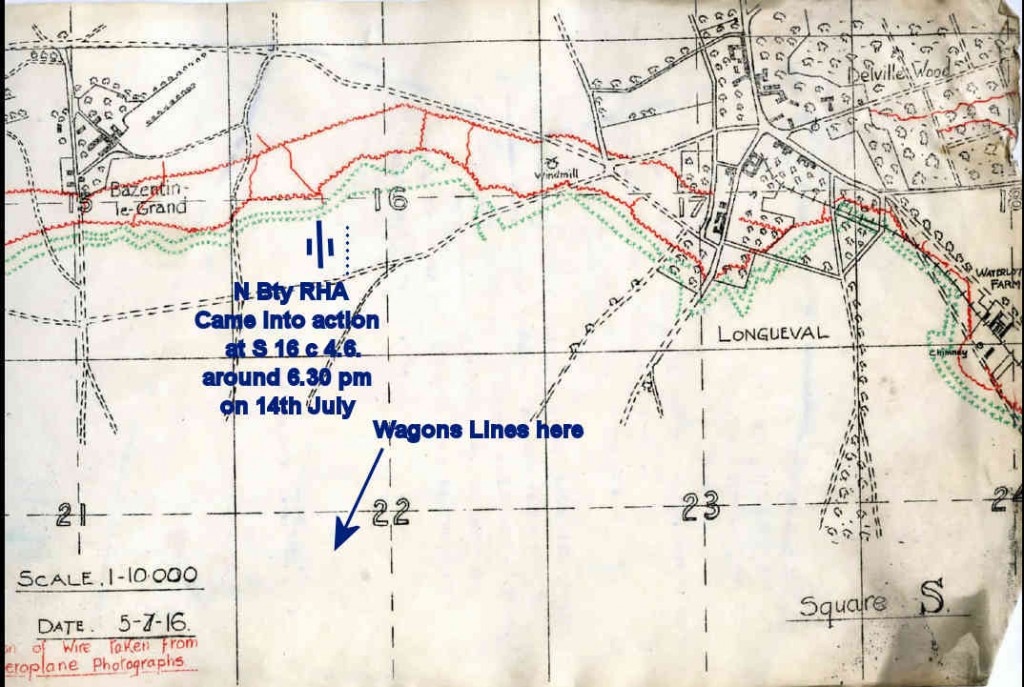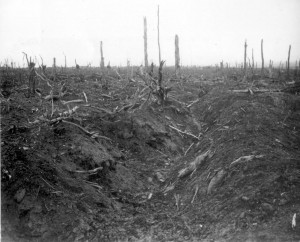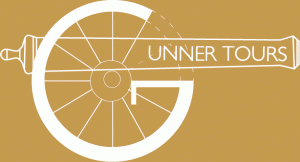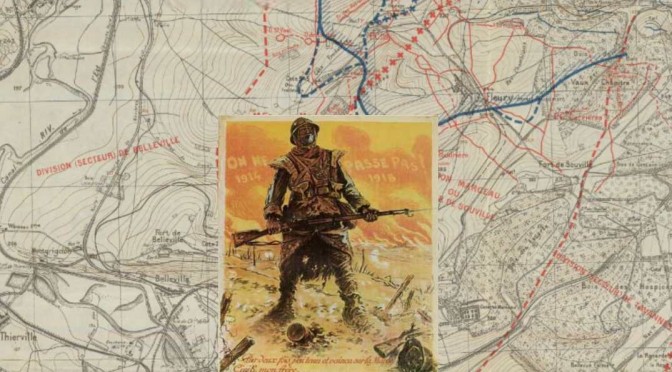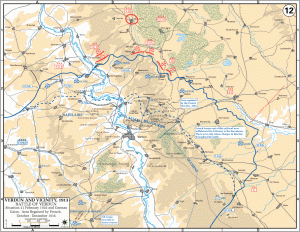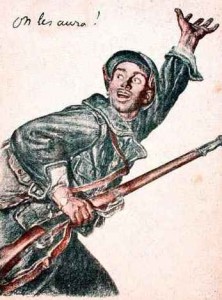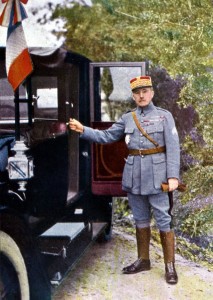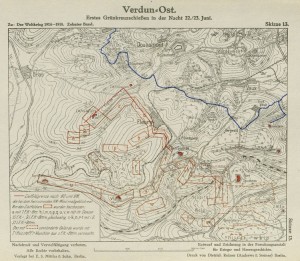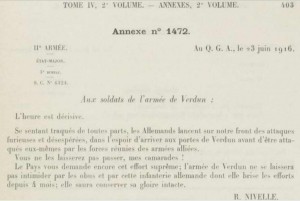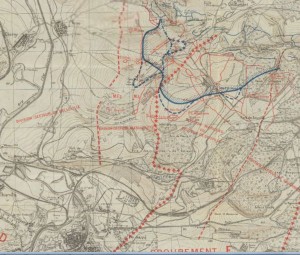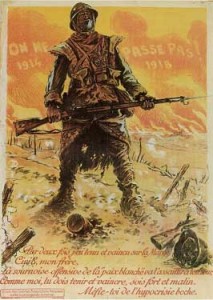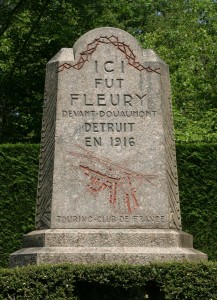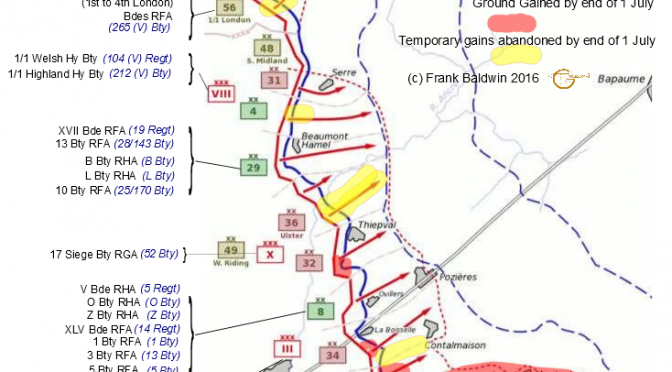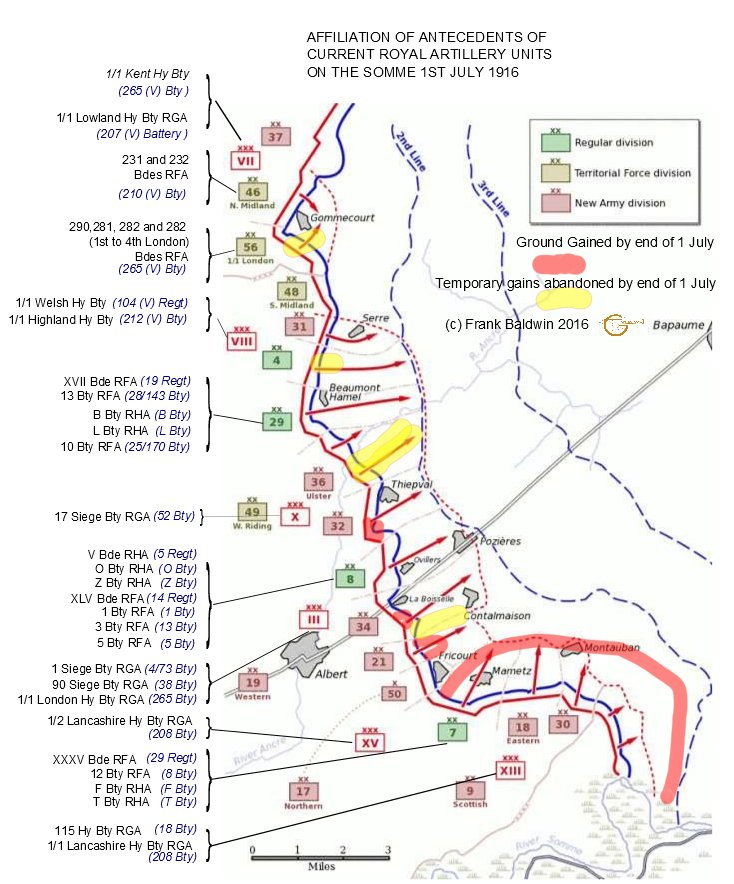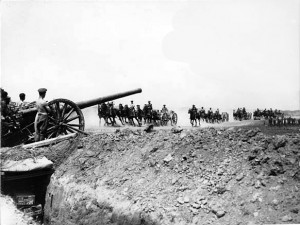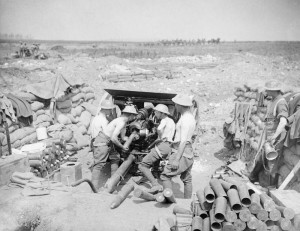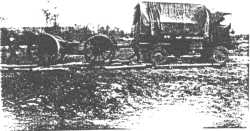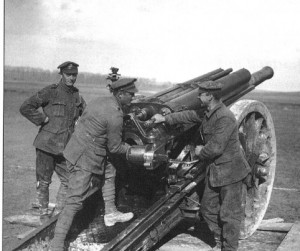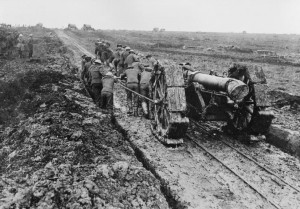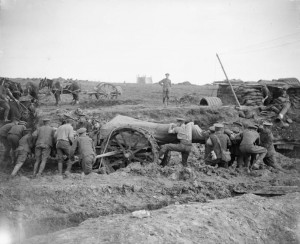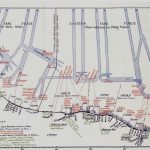
“1. The aerial bombardment and Naval Gun Fire failed to reduce the German fortifications and failed to neutralise enemy artillery and machine gun fire.
2. A German Infantry Division thought to have been in reserve around St Lo had moved up the beach defenses on a “maneuver” and added materially to the opposition.
….. things had not gone altogether as planned. Items 1 and 2 were chiefly responsible and particularly 1…..Those bluffs were captured and those exits opened solely through the plain undaunted heroism of the infantry the 1st and 29th Divisions and their attached engineer teams”[i]
This is an extract from the report by Colonel E G Paules the Engineer member of the War Department Observers Board after visiting Omaha Beach on D +6. Many would agree with Colonel Paules’ verdict, especially the heroism and initiative of the infantry and engineers. The same sentiments can be found in the official history. The failure of the aerial and naval bombardment to neutralise defences of Omaha Beach remains controversial. But a re-examination of critical data about D Day reveals a different interpretation of what happened on Omaha Beach on D Day.
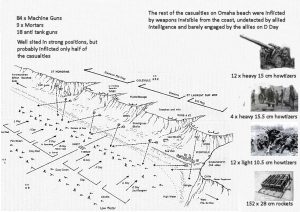 One problem in studying the story of Omaha Beach is that there is still only sketchy information about the true strength of the German defences at Omaha Beach. Some aspects are extremely well documented. The positions on the bluffs and beach have been documented in create detail over the years. We even know the names and faces of the individual German soldiers defending some positions. Much less is known or documented about the artillery support for the same defenders. Artillery was the dominant lethal arm in the twentieth century, responsible for well over half of all casualties. The US Official History made no attempt to locate artillery positions that were not on the coast or in the Op Neptune Target List. Even modern detailed studies such as Stephen Badsey and Tim Bean’s Battle Omaha Beach Zone Normandy[ii] and Peter Caddick Adams’ Sand and Steel[iii] are vague about the German guns.
One problem in studying the story of Omaha Beach is that there is still only sketchy information about the true strength of the German defences at Omaha Beach. Some aspects are extremely well documented. The positions on the bluffs and beach have been documented in create detail over the years. We even know the names and faces of the individual German soldiers defending some positions. Much less is known or documented about the artillery support for the same defenders. Artillery was the dominant lethal arm in the twentieth century, responsible for well over half of all casualties. The US Official History made no attempt to locate artillery positions that were not on the coast or in the Op Neptune Target List. Even modern detailed studies such as Stephen Badsey and Tim Bean’s Battle Omaha Beach Zone Normandy[ii] and Peter Caddick Adams’ Sand and Steel[iii] are vague about the German guns.
TO WHAT EXTENT WAS THE D DAY AERIAL AND NAVAL GUN FIRE A FAILURE.
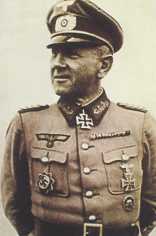
George A Harrison in the US Official History “Cross Channel Attack”[iv] described the beach drenching bombardment as “Generally ineffective”, against an enemy that was twice as numerous, unexpectedly strong and included soldiers from a different and higher quality formation than they had expected to face. Harrison mentions this faulty intelligence as a curious failing.[v]
The D Day naval bombardment plan worked – up to a point. The planners knew that the preliminary bombardment would not destroy all, or even the majority of, the German defences. Precision guided munitions had not been invented in 1944. There was nothing in the Allies armoury that could eliminate the hardened concrete bunkers and shelters which were the framework of the defences. The bombardment might destroy a proportion of the defenders weapons, as well as disrupting communications and keep the defenders heads down long enough for the assaulting infantry to close with them.
This was shared down the chain of command, and there are several accounts of briefings before D-Day with gloomy estimates of up to 80% losses by the assault troops.
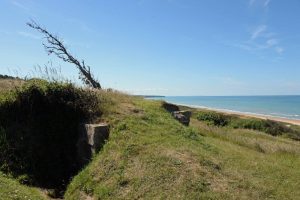
The aerial bombardment by the heavy day bombers of the Eight Air Force was a key part of the bombardment plan. To make up for the short naval bombardment 327 B24four engine heavy day bombers were scheduled to drop 13,000 bombs on the Omaha Beach defences. However, one consequence of the decision to launch the operation in marginal weather conditions was that the heavy bombers would have to bomb blind through cloud. As a safety measure the point of aim adjusted 1000yards inland, with the hope that some bombs would fall on the defences, and the knowledge that most would not.[vi]
Harrison acknowledges that the preparatory navel bombardment did have some effect, including the detonations of minefields and destruction of enemy rockets.[vii] The testimony of one of the best-known German survivors, Franz Gockel described how the trigger mechanism for flame throwers were destroyed by the bombardment.[viii]
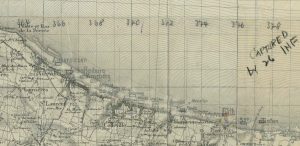
There is information that can help to understand more. Immediately after D Day British 21st Army Group Operations Research scientists carried out a series of studies to check the effectiveness of various allied tactics and technology- a sort of CSI 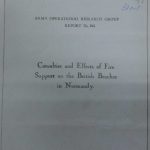 Normandy. At the end of the war a study was made of the casualties and effects of fire Support on the British Beaches in Normandy, from which the authors deduced a model for casualties inflicted per weapons type using the concept of “machine gun equivalents” to compared mortars with machine guns . The study (AORG 261)drew the conclusion that the preliminary bombardment and drenching fire knocked out around 10-20% of weapons and reduced the effectiveness of machine guns by two thirds and mortars by three quarters. By comparing casualties from beaches on which no reports of mortar fire with this with a mix of machine guns and mortars they could build a best fit model, 17-19 casualties per machine gun equivalent across the three British beaches. For example, the 14 machine guns and seven mortars that could engage Sword beach should, under range conditions have resulted in 70% casualties among the assaulting infantry, but only inflicted around 22%. The German defensive fire was only one third as effective as it could have been, had no one been firing at them.[ix]
Normandy. At the end of the war a study was made of the casualties and effects of fire Support on the British Beaches in Normandy, from which the authors deduced a model for casualties inflicted per weapons type using the concept of “machine gun equivalents” to compared mortars with machine guns . The study (AORG 261)drew the conclusion that the preliminary bombardment and drenching fire knocked out around 10-20% of weapons and reduced the effectiveness of machine guns by two thirds and mortars by three quarters. By comparing casualties from beaches on which no reports of mortar fire with this with a mix of machine guns and mortars they could build a best fit model, 17-19 casualties per machine gun equivalent across the three British beaches. For example, the 14 machine guns and seven mortars that could engage Sword beach should, under range conditions have resulted in 70% casualties among the assaulting infantry, but only inflicted around 22%. The German defensive fire was only one third as effective as it could have been, had no one been firing at them.[ix]
 A follow up study comparing the British with Americans beaches (AORG 292 )drew the conclusion that the effects of machine gun fire had been reduced by about a half, which was less than on the British beaches because of the terrain and strength of the defences.[x] However, this analysis was flawed because it assumed that German artillery had been neutralised by the naval and aerial bombardment. We know this to be untrue from the testimony of American soldiers under bombardment and from the German records that the artillery under command 352nd Infantry Division had fired almost all of their first line stocks of ammunition.[xi]
A follow up study comparing the British with Americans beaches (AORG 292 )drew the conclusion that the effects of machine gun fire had been reduced by about a half, which was less than on the British beaches because of the terrain and strength of the defences.[x] However, this analysis was flawed because it assumed that German artillery had been neutralised by the naval and aerial bombardment. We know this to be untrue from the testimony of American soldiers under bombardment and from the German records that the artillery under command 352nd Infantry Division had fired almost all of their first line stocks of ammunition.[xi]
One reason that the Omaha Beach story has missed the effects of German artillery is because the wartime fiction that the 352nd were at Omaha Beach on temporary maneuvers carried over into the post war narrative.
The Vth US Corps Plan was based on the assumptions that Omaha beach was defended by a single second rate infantry Regiment of the 716th Static division.[xii] Instead they faced soldiers under command of the 352nd Infantry Division, formed in late 1943 from around 2,0000 east front veterans and drafts of young recruits. In March 1944 Rommel, the German commander of the invasion front, had ordered the 352nd division to take over the Bayeux sector, between Asnelles and the river Vire. 352nd Division took command of the 726th (Static) Infantry Regiment and two of its three regiments of the 352 were superimposed over the existing defences, from the river Vire to Asnelles east of Arromanches.[xiii] War is a kind of democracy, the Germans had a say.
FAULTY ALLIED INTELLIGENCE
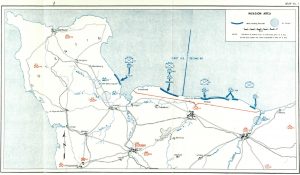
Allied staffs were reluctant to admit that the intelligence picture was wrong. The highly detailed maps showing German defences and the awareness of senior commanders of Ultra intercepts gave a misleading impression of accuracy and reliability if not omniscience. However, allied intelligence was flawed. Ultra was of little help identifying details of gun pits and trenches or an enemy using line communications. It was easier to find concrete emplacements using a photo reconnaissance aircraft than camouflaged field positions. It was also hard to locate an enemy that they were not looking for. The target lists identified the positions of the 716th that they expected to find. They weren’t looking for the field positions occupied by the 352nd, and when they did find gun pits they assumed that they were for something else.
However, one explanation for disproportionate information about coastal defences is that the Germans made extensive use of French contractors to complete the fortifications on the coast, which also happened to be easily spotted by allied aircraft. The resistance may not have had the same access to the troops deploying into field positions inland, which were also much harder to spot from the air.
FIRE SUPPORT FOR THE GERMANS DEFENDING OMAHA BEACH
As regards Omaha beach itself, the defences were doubled, as an additional battalion deployed in the sector. The number of machine guns was doubled from some 40+ machine guns to 85. V Corps estimated that there were some 24-36 field guns “completely integrated into the strong points along fifty miles of coast,” Instead thirty-six 10.5 cm howitzers and sixteen 15cm howitzers were deployed a few miles behind the coast in range of Omaha Beach, in addition to the artillery integrated within the coastal strongpoints. There were seven batteries.
- Three from 1st Battalion AR 352, (I/352) each equipped with four 10.5 cm German howitzers, marked as (1./352, 2./352 and 3./352)
- Three from IVth Battlaion AR 352 each equipped with four 15cm German howitzers, marked as (7./352, 8./352 and 9./352)[xiv]
- One from 10th Battery from Artillery Regiment 1716 (10./1716) equipped with four 15.5 cm (f) captured French howitzers.[xv]
Map

1 shows the location of these batteries.[xvi] Map 2 is a German map which shows the detail of Omaha beach area and the ranges from 10./1716’s position. The map also shows the Omaha beach defences and three triangles marking the artillery observation posts on Omaha Beach. One for the 10./1716 and two from Artillery Regiment 352. The 352 Divisional signals log includes reports from observations posts from each of I and IV/352 indicating that they were observing Omaha Beach.
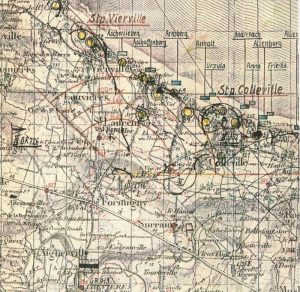
Each howitzer was about three times as lethal as an MG 42 machine gun. A machine gun firing an average of 250 rounds per minute created a beaten zone some 25 wide by 250 meters long. A howitzer shell flung thousands of supersonic shell fragments up to 250 metres. A battery of four howitzers could deny an area 50m x 200m. British world war two figures estimate that ten rounds per gun would inflict 20%+ casualties on troops in the open crossing that area. The fragments from howitzers could reach men hiding behind cover such as the shingle bank.
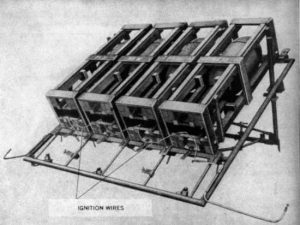
The Germans had a further nasty surprise for the assault troops. There were 38 pits each containing a wooden or steel frame, a 28/32cm Schwer wurfgeräte or heavy throwing equipment. Each frame held four unguided rockets, either 28cm containing 110 lb TNT high explosive or 32 cm incendiaries, containing 11 gallons of oil. These had a short range , just over 2,000 yards and were very inaccurate. A detachment of
84th Werfer Regiment are thought to have operated these at Omaha from position near the village of St Laurent.
The German 352nd Artillery Regiment fired almost all its first line ammunition on the morning of D Day. That is the best part of 225 rounds per 105cm Howitzer and 135 rounds per 15 cm Howitzer. 20 rounds per 105mm Howitzer would be enough to cause 20% casualties on a body of men caught under one of the 200m x 50m defensive barrages (according WW2 era calculations.) But each battery could fire ten such concentrations before ammunition became perilously low. By 10.00 ammunition was running low, in particular for the heavy battalion[xvii].[xviii] The Artillery Regiment commander ordered ammunition to be conserved for emergency use – three rounds per gun only to support units under immediate attack.[xix]
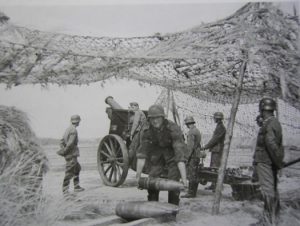
Although strongly sited on commanding ground overlooking the beaches, the Omaha Beach defences were far from perfect. Even on this most strongly held beach, the defences were spread far thinly than normal. Infantry and anti-tank guns were sited on a forward slope where they could be engaged from the sea. The fortification programme was incomplete. Only 15% of the fortifications in the 352nd Divisional area were bomb proof and 45% splinter-proof.. Many of the defenders were in field defences vulnerable to allied direct fire weapons on the beach or afloat. Furthermore, there was little depth.

The big advantage the artilleryman of Artillery Regiment 352 had over the German infantrymen defending Omaha Beach was that they were not under fire. Return fire reduced weapon effectiveness by around two thirds. Over the course of D Day the number of assault troops would soon match and then outnumber the defenders and offshore naval firepower and tanks would eventually supress direct fire weapons targeting the beach. Previously hidden howitzers in the countryside up to five miles from the beach were not easy to find quickly on the morning of D Day. The gunners of Artillery Regiment 352 would not be under fire as they engaged in the industrial warfare of dispatching howitzer shells.
A REVISED MODEL OF WHAT HAPPENED
Reworking the British study referred to earlier, to include the seven batteries in range of Omaha Beach, with one howitzer equivalent to three machine guns results in a very similar figures to those modelled in the study of the British beaches.
I have assumed that all 28 howitzers fired on Omaha Beach. We know Pluskat’s I/352 were firing. IV/352 was short of ammunition by 10.00 and was not firing at Gold or Utah beaches which were out of range.
Despite the claims of total ineffectiveness, we don’t know how many of the German weapons were damaged by the aerial bombardment. Nor do we know how many of those weapons were fired. The study of the British beaches found that a proportion of weapons were serviceable but had not been fired. There is no reason to believe that the naval bombardment at Omaha was delivered less effectively than on other beaches. Nor that the soldiers on Omaha Beach were less resistant to panic or the confusion of battle.
| Table 1 Percentage of casualties caused by different weapons on Omaha Beach | ||||||
| Proportion of weapons on beach destroyed or unmanned by preliminary bombardment | ||||||
| Numbers of weapons (1) | 0% | 10% | 20% | 30% | 40% | |
| Machine guns | 85 | 45% | 43% | 40% | 38% | 35% |
| Mortars | 6 | 9% | 9% | 9% | 8% | 7% |
| Wurfergerate 41(2) | 152 | 2% | 2% | 1% | 1% | 1% |
| 105mm (3) | 12 | 19% | 20% | 21% | 23% | 24% |
| 150cm (3) | 16 | 25% | 27% | 28% | 30% | 33% |
| Total Artillery | 28 | 46% | 48% | 51% | 54% | 58% |
| Casualties per MG Equivalent (4) | 15.8 | 16.7 | 17.8 | 19.0 | 20.3 | |
| Notes | ||||||
| 1. The number of machine guns and mortars are taken from AORG report 292. The number of artllery pieces is taken from Zetterling | ||||||
| 2. The 152 Wurfergerate 41 is considered to be the equivalent of a mortar or artillery piece with 152 rounds of ammunition. The increased destructive power cancelled by inaccuracy. | ||||||
| 3 Mortars and artillery calculated as three machine gun equivalents as per AORG 292 | ||||||
| 4. Total 3,000 casualties taken from AORG 292 | ||||||
The tables 1 models the distribution of casualties by weapon on D Day with assumptions of the effectiveness of the preliminary bombardment from having no effect at all, to 40% of weapons, the upper end of the AORG findings from British beaches.
There is still debate about the precise number of casualties on Omaha Beach. I have taken the figure of 3,000 from AORG 292. The leftmost figure for casualties per MG equivalent , assumes that the preliminary bombardment was totally ineffective, as is sometimes claimed. If this were so, it would mean that if all of the weapons on Omaha Beach survived the bombardment they would be on average less effective than comparable machine guns or mortars on Gold or Sword beach. It would seem more reasonable for the figure to be as high as the British beaches – which would assume that 10-20% of weapons were knocked out by the bombardment and 10-20% left unmanned – just as in the bombardments on the British beaches.
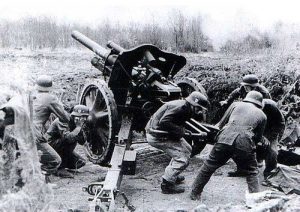
There is a rationale behind there being a similar average number of casualties inflicted by each machine gun. The allied forces on each beach landed with very similar forces, trained to a common standard using similar tactics supported by very similar forces off shore. Is it unreasonable that across all of the individual engagements on the four beaches the number of casualties that a machine gun might inflict before being suppressed is similar?
There are of course a lot of assumptions in a simplistic model. If you want to put in your own figures the model is here.
The key implication is that around half of the casualties on Omaha Beach were inflicted by artillery that had not been located before D Day; could not be engaged by the ships or armour landed on Omaha Beach. The casualties from artillery alone on Omaha Beach were probably higher than lost to all causes on any other beach.
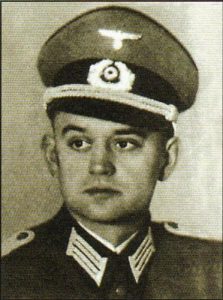
The assault troops could do nothing about the rain of artillery shells until either the observation posts were captured or the Germans ran out of ammunition, which they did around lunchtime on 6th June. Allied air power did play a part, by interdicting German road movement inland.
HOW MUCH LOWER MIGHT CASUALTIES HAVE BEEN IF THE BOMBARDMENT WAS LONGER?
The bombardment on Omaha Beach lasted for a bare hour, an hour less than on the British beaches. The time of H Hour, the landings was determined by the tide, which reached low tide earlier at Omaha Beach. It has been argued that an additional hour of bombardment might have made a big difference to the number of casualties on Omaha Beach. Modelling the effect of increasing the level of damage by a further 10-20% shows a reduction in casualty numbers by perhaps 300-450, around 20% of the total historic casualties – but could have little effect on the undetected artillery.
WHAT IF THE NAVAL BOMBARDMENT HAD FOLLOWED THE PACIFIC WAR MODEL?
Some have argued that the Omaha Beach should have been prepared in the same way as the Japanese defences on the islands captured in 1944-45. A lengthy bombardment systematically demolishing the defences talking a week if necessary. This is similar to the tactics developed in the first world war and implemented at Vimy Ridge and Messines in 1917. While this would indeed demolish the beach defences, it would do little to neutralise the undiscovered artillery. Furthermore, it would give the Germans ample warning of the target area and allow them to concentrate their artillery, and deploy reserves in depth. This would risk an attritional battle on the beach itself reminiscent of Paschendaele. A mere doubling the number of defending batteries might be expected to cause an additional 1,500 casualties.
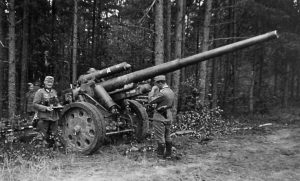
WHAT IF THE WEATHER HAD BEEN BETTER?
The fire plan was predicated on fine weather and good visibility. With good weather the Eighth Air Force bombers might have dropped more ordnance on Omaha Beach. On the British beaches many of the defences were further inland than at Omaha Beach.On the British beaches air attacks were considered to have knocked out 13% of defences. Had that been repeated on Omaha Beach that might have resulted in the destruction on nine machine guns and a mortar, which according to the model might have saved 193 casualties
WAS THERE A WAY TO FIND THE HIDDEN GUNS?
Locating enemy guns was a science and an art. The Allies had a range of scientific techniques for finding artillery, sound ranging wireless DF and flash spotting. Unfortunately none of these were of any use against artillery which had not previously disclosed its positions or indeed could be deployed on ships.
There was an art to finding hidden positions in aerial photographs, or for human agents to locate positions on the ground. About the only tool for locating artillery the allies had on D Day were aerial observers, artillery officers flying planes. The Senior British Artillery Officer in the Second British Army was Brigadier HJ (Hatchet Jack) Parham. He was acutely aware of the need for aerial observers on D Day. He did his best to argue for an aircraft carrier for Air OP aircraft and even the prototype Sikorsky helicopter to provide more eyes in the sky on D Day. This is perhaps the only route that might have led to the discovery and neutralization of the artillery that bombarded Omaha beach.
PARACHUTE ASSAULT
With hindsight, perhaps the best way to have prevented high casualties among the assaulting infantry on Omaha Beach might have been to land paratroops inland.[xx] This isn’t original Stephen Badsey made this point in 2004 The parachute drops on the Cotentin peninsular landed on and behind many of the artillery positions severely disrupted the German artillery which could have made Utah as fatal as Omaha beach.
TOO HIGH EXPECTATIONS
It is worth remembering that the assault on Omaha Beach was a success. The beachhead was secured and over 34,000 troops landed at a cost of around 8-10% of the assaulting force.
The balance sheet for failure in C20th battles looked somewhat different. On July 1st on the Somme the British VIII Corps lost 14,000 casualties in about 20 minutes from some 24,000 assault troops attacking a comparable frontage to Omaha Beach after the barrage lifted prematurely. No ground was gained.[xxi]
Even successful assaults on defended positions with heavy artillery support incurred high casualties. The set piece attack on the Hindenburg line 29 Sep-2 Oct 1918 cost the 27th Infantry Division 3,076 casualties[xxii] and the 30th Infantry Division 2,494 casualties[xxiii], mainly on the 29th. Between 18 and 22 July 1918, the Big Red One took part in the very successful Franco-American counter stroke on the River Aisne at a cost of 6,800 casualties over the five days.[xxiv] Three weeks before D Day the IInd Polish army corps lost 4,199 casualties in the final assault on Monte Cassino.
A little too much is made of the failure of plans to work as intended. War is inherently chaotic. There is an Anglo-American misguided belief that military commanders can impose their will on the elements and an un-cooperative enemy. Perhaps it is time to move on from hunting scapegoats for the high casualties at Omaha beach and appreciate the role of fortune elsewhere on the D Day beaches.
[i] War Department Observers Board Report No 23 report Observations on the Invasion of France and the Fall of Cherbourg. 25 July 1944
[ii] Badsey S and Bean T Omaha Beach: Battlezone Normandy (2004)
[iii] Caddick Adams P Sand and Steel, (2019) P562
[iv] Harrison, Gordon A, United States Army in World War 2 European Theatre of Operations: Cross Channel Attack. (1950) p319
[v] Harrison Footnote p319
[vi] Harrison P300
[vii] Harrison P302
[viii] Liddle P, D Day by those who were there. (2004) pp125-130
[ix] WO 291/243 AORG report 261 Casualties and effects of Fire Support on the British Beaches in Normandy (1945)
[x] WO 291/270 AORG Report 292 Comparison of British and American areas in Normandy in terms of fire support and its effects. (1945)
[xi] FMS B432 352d Infantry Division (5 Dec 1943-6 Jun 1944). By Oberstleutnant Fritz Ziegelmann (1946). Organization and fighting on D day in Normandy.
[xii] HQ V Corps Operations Plan Neptune Annex 1 G2 Estimate of the Enemy Situation 1st April 1944
[xiii] Ziegelmann
[xiv] Gliderung der 352 I D Stand 1.5.44 T312,R1566 F000216 quoted in Zetterling, N: Normandy 1944 German military Organisation, Combat Power and Organisational Effectiveness (2000) p278
[xv] Gliderung der 716 I D Stand 1.5.44 T312,R1566 F000215 quoted in Zetterling, ibid p298
[xvi] FMS B490 Map 16a. This is a revised version of Map 5 in FMS B432, which was drawn from memory. Drawn a year later it corrects the identity of the battalions and adds the 10ht battery of AR 1716.
[xvii] FMS B-388 352d Infantry Division (6 Jun 1944). By Oberstleutnant Fritz Ziegelmann; 36 pp; D Day in Normandy. Extracts from the operations officer’s telephone log.
[xviii] FMS B432 Ziegelman P26
[xix] Milano, V and Connon , B Normandy Front D Day to Saint Lo through German eyes (2011) Chapt 5
[xx] Badsey S, Culture, controversy, Caen and Cherbourg: the first Week in Buckley J, The Normandy Campaign 1944 Sixty Years on (2004)
[xxi] Prior R and Wilson T Battle of the Somme (2005) P80
[xxii] 27th Division Summary of Operations in the World War ABMC (1944) p36
[xxiii] 30th Division Summary of Operations in the World War ABMC (1944) p35
[xxiv] 1st Division Summary of Operations in the World War ABMC (1944) p33
